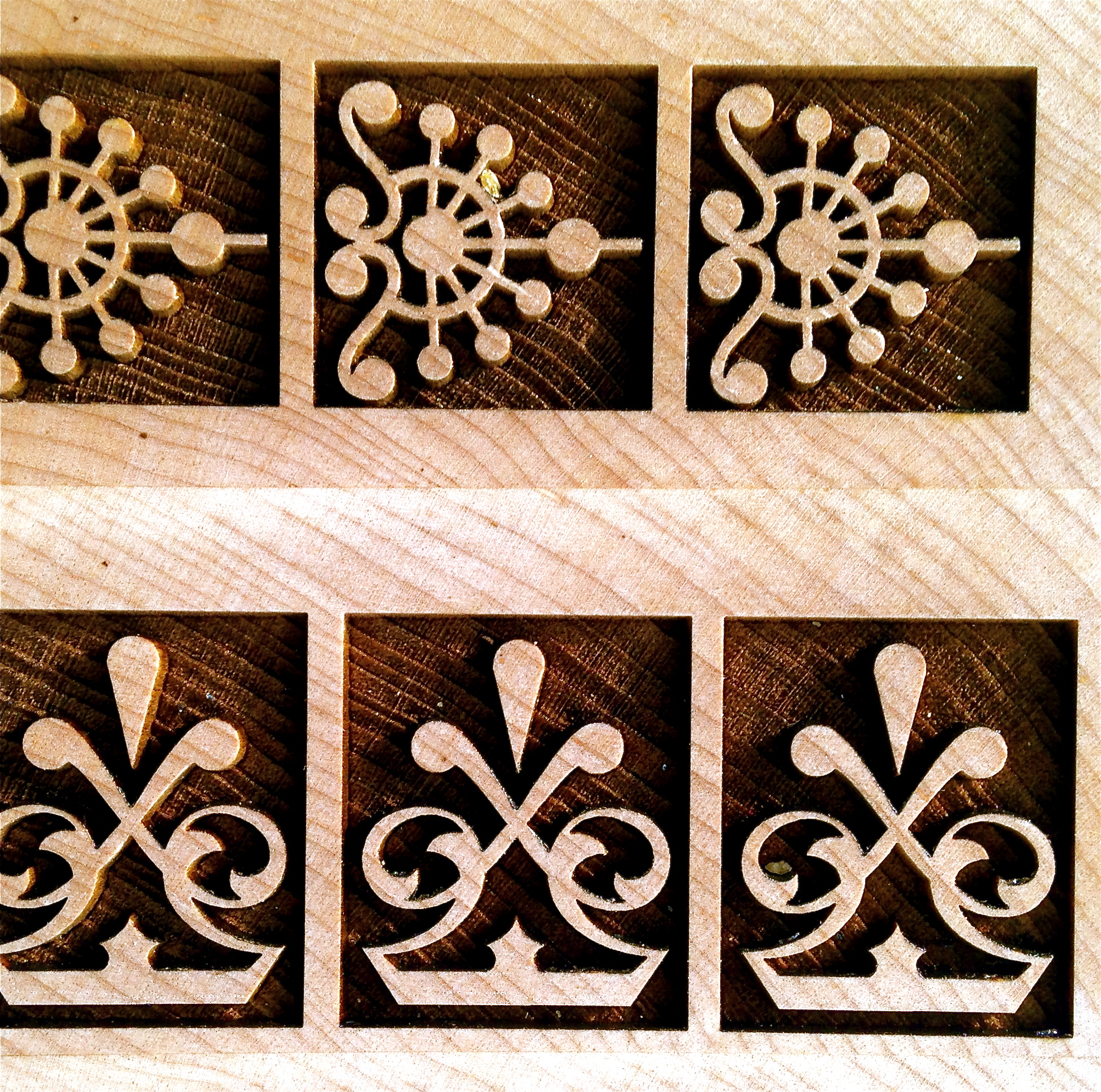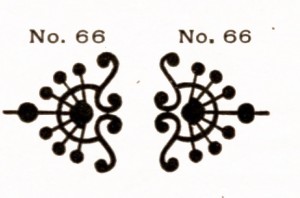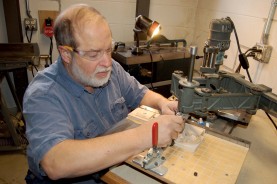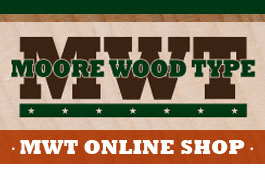Steamboats and Crowns

The most common question I get at workshops and colleges is “Where do you get the ideas for your new wood type?”
The answer is “From historic references such as the Morgans and Wilcox 1893 Specimen book, The Hamilton Wood Type #14 Specimen of Wood Type book, The Tubbs and Co. 1905 #5 Specimen book, (owned by Paul Aken at the Platen Press Museum in Zion, Illinois) and the William Page 1888 Type Specimen Book. I have also been blessed to have friends with some of the largest collections of historic wood type specimen books who have allowed me to take digital photos or send me proofs and scans.”
Some of my best selling designs have come from European specimen books in the collection of Gregory Walters. The Haddon-Caxton List of Poster Wood-Letters, Ornaments and Rules has been an amazing source.
A good example of the process follows the two new ornaments I am adding to my on-line store. The Morgans and Wilcox Ornament #13 and the Tubbs and Co. fancy ornament #66. I scanned both of these images and dropped them in Adobe Illustrator. The resulting art will be both vector art and Raster art. The vector file will be used to make plywood patterns for the pantograph and the Raster art will be used on the laser to burn small line end grain versions that are too small to trim by hand.
Since type specimen books were printed with the actual type at the actual size shown, a scan or photo is the best quality available. Some modern book images have been photographed, enlarged, reduced and offset printed. They get fuzzy and distorted. Tracing them in Illustrator allow me to correct the math problems and in some cases slightly modify them to make them easier to pantograph cut.
My printer friends help with working names for each piece. The nicknames make them easier to discuss. I nicknamed the Morgans #13 a “Crown” and Erin named the Tubbs #66 a “Steamboat” after all the fancy trim on a riverboat.



